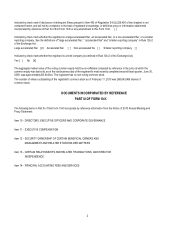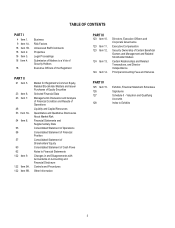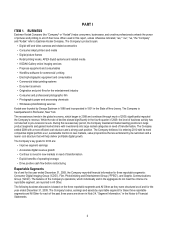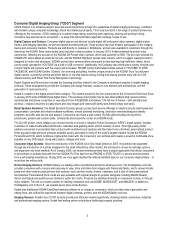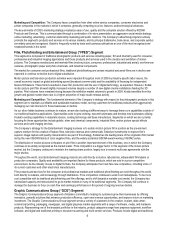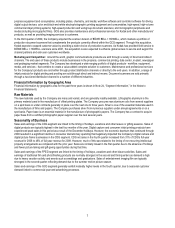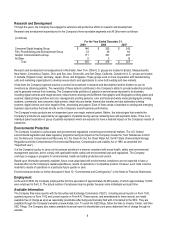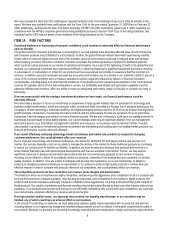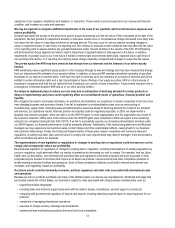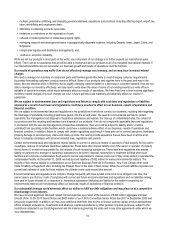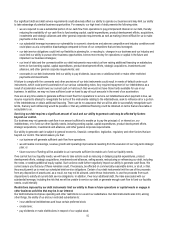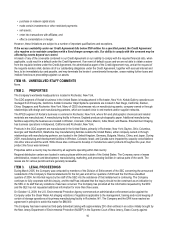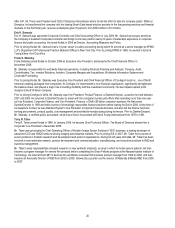Kodak 2009 Annual Report Download - page 14
Download and view the complete annual report
Please find page 14 of the 2009 Kodak annual report below. You can navigate through the pages in the report by either clicking on the pages listed below, or by using the keyword search tool below to find specific information within the annual report. 12
Due to the nature of the products we sell and our worldwide distribution, we are subject to changes in currency exchange
rates, interest rates and commodity costs that may adversely impact our results of operations and financial position.
As a result of our global operating and financing activities, we are exposed to changes in currency exchange rates and interest rates,
which may adversely affect our results of operations and financial position. Exchange rates and interest rates in markets in which we
do business tend to be volatile and at times, our sales can be negatively impacted across all of our segments depending upon the
value of the U.S. dollar. In addition, our products contain silver, aluminum, petroleum based or other commodity-based raw
materials, the changes in the costs of which can be volatile. If the global economic situation remains uncertain or worsens, there
could be further volatility in changes in currency exchange rates, interest rates and commodity prices, which could have negative
effects on our revenue and earnings.
We have outsourced a significant portion of our overall worldwide manufacturing, logistics and back office operations and
face the risks associated with relying on third party suppliers.
We have outsourced a significant portion of our overall worldwide manufacturing, logistics, customer support and administrative
operations (such as credit and collections, and general ledger accounting functions) to third parties. To the extent that we rely on
third party service providers, we face the risk that those third parties may not be able to:
• develop manufacturing methods appropriate for our products;
• maintain an adequate control environment;
• quickly respond to changes in customer demand for our products;
• obtain supplies and materials necessary for the manufacturing process; or
• mitigate the impact of labor shortages and/or disruptions.
As a result of such risks, our costs could be higher than planned and the reliability of our products could be negatively impacted.
Other supplier problems that we could face include component shortages, excess supply, risks related to duration of our contracts
with suppliers for components and materials and risks related to dependency on single source suppliers on favorable terms or at all.
If any of these risks were to be realized, and assuming alternative third party relationships could not be established, we could
experience interruptions in supply or increases in costs that might result in our inability to meet customer demand for our products,
damage to our relationships with our customers, and reduced market share, all of which could adversely affect our results of
operations and financial condition.
Our inability to effectively complete, integrate and manage acquisitions, divestitures and other significant transactions
could adversely impact our business performance including our financial results.
As part of our business strategy, we frequently engage in discussions with third parties regarding possible investments, acquisitions,
strategic alliances, joint ventures, divestitures and outsourcing transactions and enter into agreements relating to such transactions
in order to further our business objectives. In order to pursue this strategy successfully, we must identify suitable candidates and
successfully complete transactions, some of which may be large and complex, and manage post closing issues such as the
integration of acquired companies or employees and the assessment of such acquired companies’ internal controls. Integration and
other risks of transactions can be more pronounced for larger and more complicated transactions, or if multiple transactions are
pursued simultaneously. If we fail to identify and complete successfully transactions that further our strategic objectives, we may be
required to expend resources to develop products and technology internally, we may be at a competitive disadvantage or we may be
adversely affected by negative market perceptions, any of which may have an adverse effect on our revenue, gross margins and
profitability. In addition, unpredictability surrounding the timing of such transactions could adversely affect our financial results.
System integration issues could adversely affect our revenue and earnings.
Portions of our information technology infrastructure may experience interruptions, delays or cessations of service in connection with
systems integration or migration work that takes place from time to time. In particular, we are in the process of completing integration
of certain of our regional operations’ systems into our corporate SAP structure. We may not be successful in implementing new
systems and transitioning data, which could cause business disruptions and be more expensive, time consuming, disruptive and
resource intensive. Such disruption could adversely affect our ability to fulfill orders and could also interrupt other processes.
Delayed sales, higher costs or lost customers resulting from these disruptions could adversely affect our financial results and
reputation.
Business disruptions could seriously harm our future revenue and financial condition and increase our costs and
expenses.
Our worldwide operations could be subject to earthquakes, power shortages, telecommunications failures, water shortages,
tsunamis, floods, hurricanes, typhoons, fires, extreme weather conditions, medical epidemics, political or economic instability, and
other natural or manmade disasters or business interruptions, for which we are predominantly self insured. The occurrence of any of
these business disruptions could seriously harm our revenue and financial condition and increase our costs and expenses. In
addition, some areas, including parts of the east and west coasts of the United States, have previously experienced, and may
experience in the future, major power shortages and blackouts. These blackouts could cause disruptions to our operations or the


